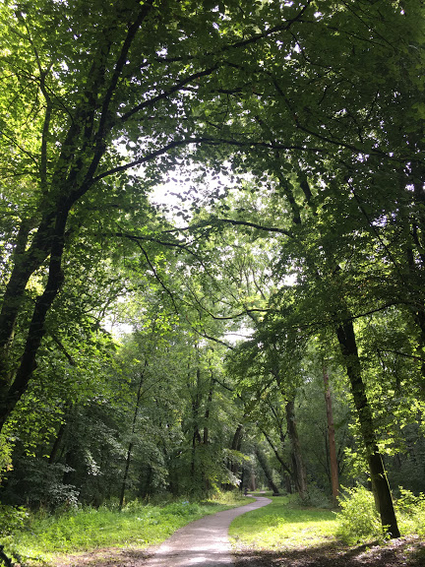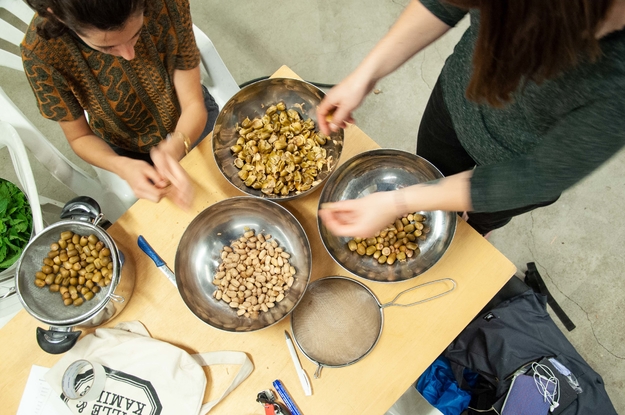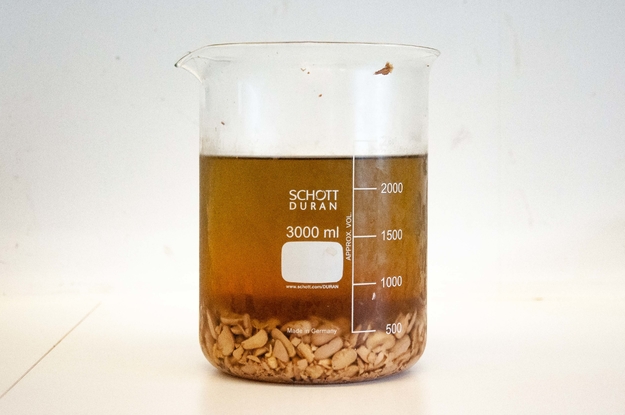The Harvest
In and around Amsterdam the oak can be found in parks, forests and along the streets. Once you are attentive, you will see them everywhere around. The Balanophagy Team as well didn’t have to travel far to harvest their first batch of acorns. In the Vliegenbos in North-Amsterdam, a good amount of acorns could be found and brought back to Mediamatic.
The Process
After harvesting, the processing goes on with drying the acorns in the oven or dehydrator. That procedure, on the one hand, makes the acorn storable and on the other hand simplifies the removal of the shell. In the case that you have a dehydrator, drying the acorns at 80°C for 20 minutes should be enough. Drying in the oven will take around 9 hours at around 50°C. After drying, the acorns are crushed and husked.
Final step: Removing poisonous tannins
Acorns contain a good amount of tannins that, in larger quantities, are poisonous for humans. So, after husking, the tannins need to be removed. The team found that rinsing acorns several times with water is the usual way to remove tannins. After rinsing the acorns 2-3 hours in boiling water, the bitter taste disappears. Water should be changed several times during the process. After this step the acorns can be eaten without any danger or astringent feeling in the mouth.


